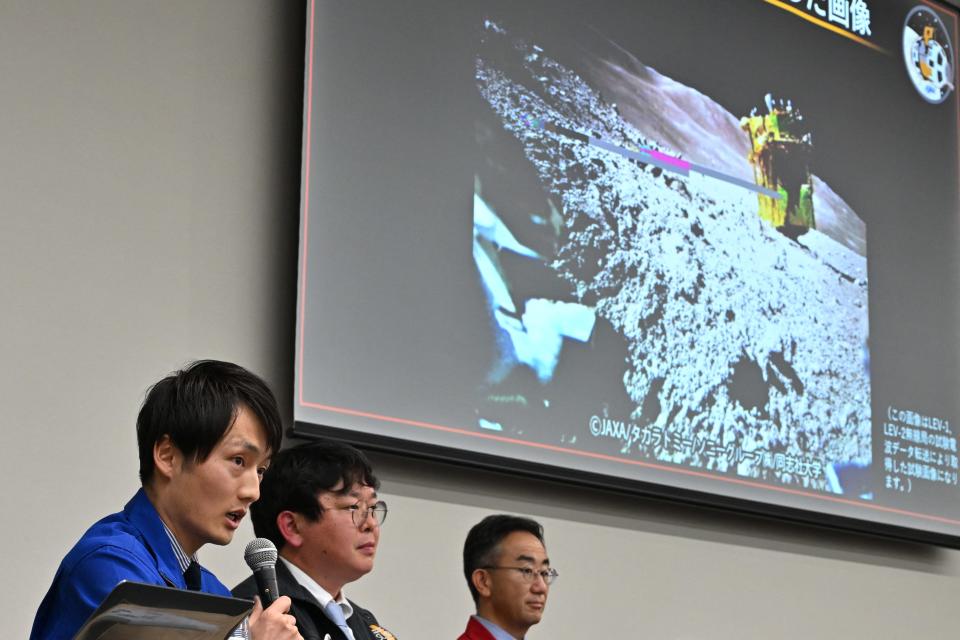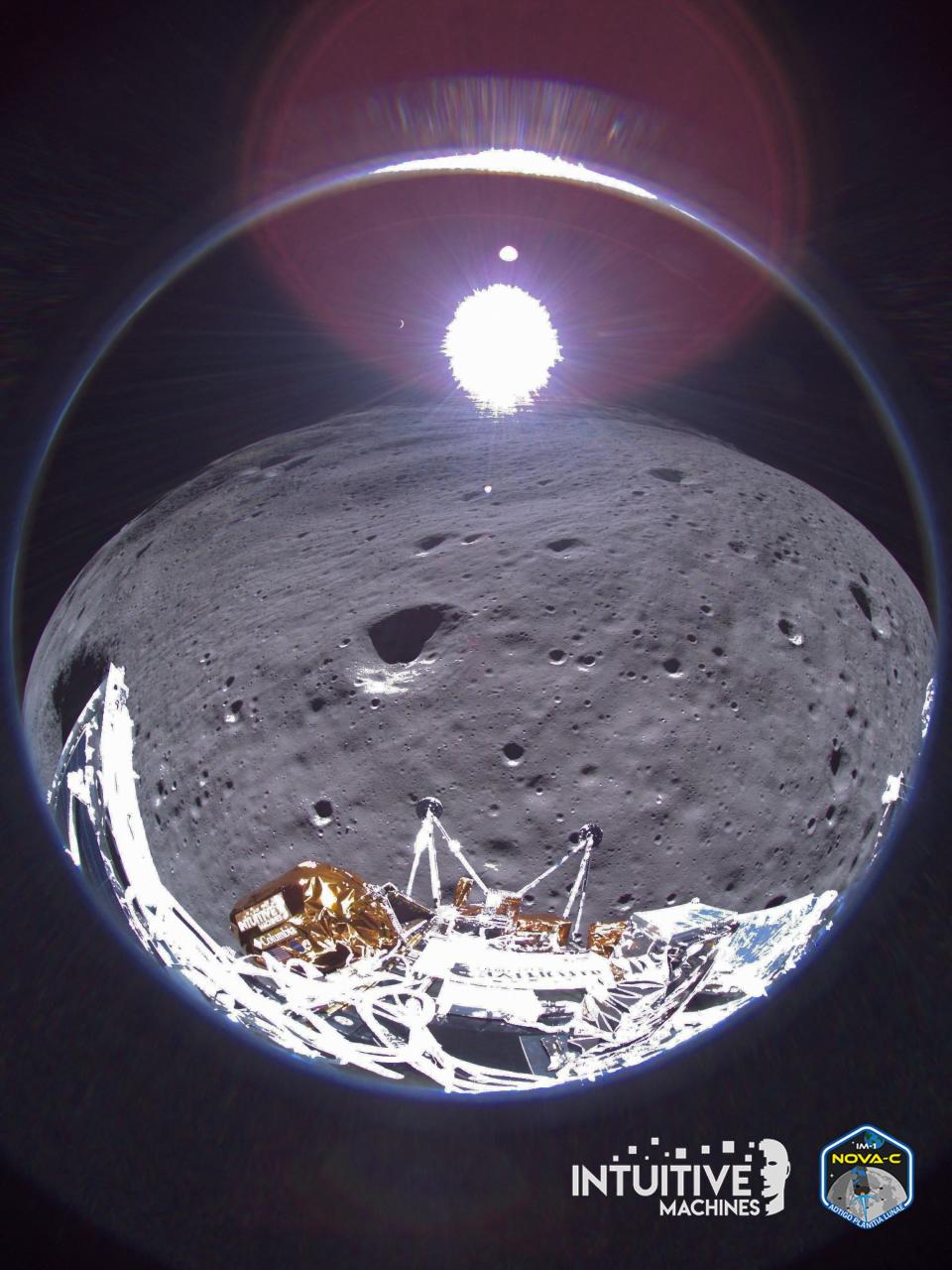Japan's lunar lander still powers away 3 months later. What to know about SLIM mission
The first lunar lander that Japan has ever sent to the moon continues to hum away on the surface, far outlasting its odds for survival more than three months since it touched down.
An image the spacecraft managed to beam back to Earth on Tuesday serves as a vital indication that the device remains powered on despite enduring three dark, frigid lunar night cycles. The nation's space agency, the Japan Aerospace Exploration Agency (JAXA,) shared the image Wednesday on social media.
To say it's unexpected for the probe to survive for so long after landing Jan. 20 might be an understatement.
You may remember when the U.S. recently sent it's own commercially-built lander to the moon in February? That spacecraft barely made it a week before it was expected to begin powering down.
Here's more about JAXA's lunar mission and how its lander's longevity compares to the United States' own craft.

Looking for extraterrestrials: Purple may be key to finding planets capable of hosting alien life, study says
What to know about JAXA's SLIM mission
When Japan's probe landed on the moon in January, it made the nation the fifth to get an uncrewed craft to the lunar surface, joining India, the U.S., Russia/Soviet Union and China.
Japan's earlier attempt in April 2023 failed after a lander designed by a Japanese company crashed into the moon's surface.
But the Smart Lander for Investigating Moon (SLIM) was never intended to survive one lunar night, let alone three – especially after it was nearly upside down when it hit the surface. When the surface of the moon is not exposed to the sun, a so-called lunar night ushers in both darkness and freezing conditions as temperatures can dip to up to minus 280 degrees Fahrenheit.
The craft wasn't designed to endure such harsh conditions, yet somehow it has.
JAXA said on the social media platform X that SLIM’s key capabilities remain functional after it started up again and communicated with the agency's ground control center.
昨晩(4/23 夜)、再び起動した #SLIM と通信することに成功し、SLIMが3回目の越夜を達成したことを確認しました。早速航法カメラにて撮影した昨晩の月面の様子がこちらです。越夜後としてはこれまでで最も早い月齢での撮影のため、全体的に明るく影が非常に短くなっています。 #JAXA #たのしむーん pic.twitter.com/U0f88xNK9S
— 小型月着陸実証機SLIM (@SLIM_JAXA) April 24, 2024
SLIM is tasked with testing Japan’s pinpoint landing technology and collecting geological data and images, the Associated Press reported. Scientists are hoping to find clues about the moon's origins by comparing the compositions of moon rocks with those from Earth.
NASA signs agreement with Japan on lunar exploration

The news of Japan's continued lunar lander success comes in the same month that the nation signed a historic agreement with the United States about how the two countries will cooperate on future moon missions.
Under the agreement, Japan will design, develop, and operate a pressurized rover for both crewed and uncrewed missions to explore the moon. NASA, meanwhile, will facilitate the launch and delivery of the rover to the moon along with two additional lunar missions with Japanese astronauts.
An enclosed and pressurized rover would enable astronauts to travel farther by serving as a mobile habitat and laboratory, NASA said. The craft will be intended to accommodate two astronauts for up to 30 days as they traverse the area near the moon's unexplored south polar region, where water ice is thought to be abundant.
“The quest for the stars is led by nations that explore the cosmos openly, in peace, and together," NASA Administrator Bill Nelson said in a statement. “America no longer will walk on the moon alone. With this new rover, we will uncover groundbreaking discoveries on the lunar surface that will benefit humanity."
Odysseus, first private U.S. lander, shut down after a week
NASA has big plans in the years ahead for lunar exploration.
For the United States, American astronauts have not set foot on the moon since the last Apollo mission in 1972. NASA's Artemis program hopes to return the nation back to the lunar surface in order to establish a base of operations ahead of crewed trips to Mars.
But Artemis has been mired in delays and controversy as elected officials and other aeronautics experts have expressed concerns about the scope and cost of the ambitious program.
Before any humans can return to the moon, NASA needed to make sure an American probe could make it to the lunar surface to pave the way for their arrival.
Those hopes were initially dashed in January, one day before Japan's SLIM landed, when an uncrewed craft designed by Pittsburgh-based aerospace company Astrobotic encountered a slew of issues. The Peregrine lander never made it to the moon, but a second chance for the U.S. came a month later.

The Odysseus lander designed by Houston-based Intuitive Machines had a sideways landing of its own on Feb. 22, but still made it to the surface and transmitted back data.
NASA, which was the primary customer for the mission, paid a hefty sum to have a payload of scientific instruments included aboard the lander to collect data that will help the agency prepare for future lunar missions.
Within a week of landing near the south pole, Odysseus was on the verge of powering down for good. In its final update on March 23, Intuitive Machines determined that Odysseus' power was depleted and the craft had "permanently faded after cementing its legacy into history as the first commercial lunar lander to land on the moon."
Eric Lagatta covers breaking and trending news for USA TODAY. Reach him at [email protected]
This article originally appeared on USA TODAY: Japan's first moon lander has survived 3 months. What's next for SLIM?
